Reviewer of the Year
Beginning in 2022, our editors will select a few of our outstanding referees each year to be featured as Reviewer of the Year.
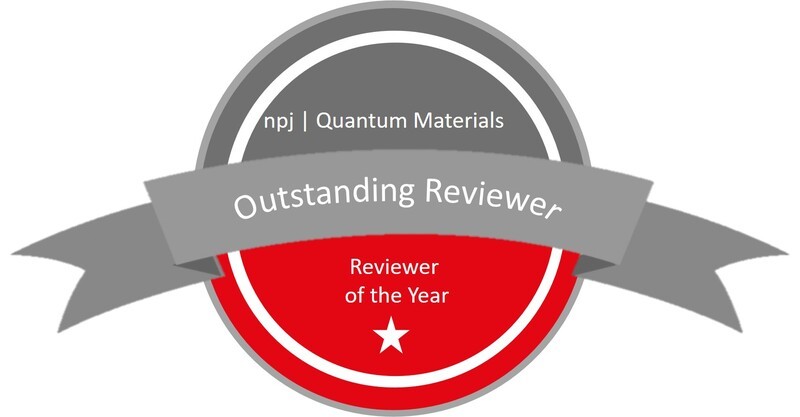 Our featured reviewers are those who have:
Our featured reviewers are those who have:
- made a significant and positive contribution to the peer review process, regardless of whether the paper was eventually accepted by the journal;
- taken both a broad and detailed view of the paper;
- demonstrated professionalism and compassion in their reviews; and
- provided comments that truly help the authors to improve their work.
We must note that, while it is our opinion that these referees have provided exceptional reviews, many of our referees meet the above criteria and we regret that we cannot recognize each of them publicly here. We are equally grateful to all of the individuals who agree to review for npj Quantum Materials, thereby helping to strengthen the scientific record. We hope that by highlighting a few of our most outstanding referees, we can bring attention to the valuable contributions of peer reviewers to the scientific process.
Morten Christensen
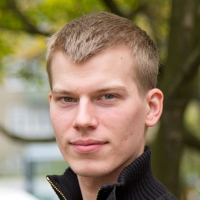 Morten Christensen is a Marie Sklodowska-Curie postdoctoral fellow at the Niels Bohr Institute at the University of Copenhagen. His research interests span the areas of strongly correlated systems and superconductivity, with emphasis on novel superconducting materials.
Morten Christensen is a Marie Sklodowska-Curie postdoctoral fellow at the Niels Bohr Institute at the University of Copenhagen. His research interests span the areas of strongly correlated systems and superconductivity, with emphasis on novel superconducting materials.
On peer review: "npj Quantum Materials has emerged as a high-quality open access journal in the field of materials study and I am happy to contribute to its continued high standard and quality."
Hermann Suderow
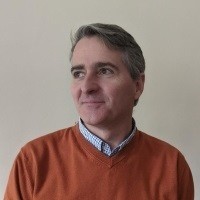 Hermann Suderow is full professor at the Universidad Autónoma de Madrid, UAM since 2019. He studied in Karlsruhe, Germany and received his PhD degree from the Université Joseph Fourier, now the Université Grenoble Alpes, in 1998 in Grenoble. He is former Marie Curie (1998-2000) and Ramón y Cajal (2001-2006) fellow and won a Spanish habilitation contest in 2006. Professor Suderow studied during his PhD the thermal conductivity of the superconducting phases of UPt3 down to very low temperatures. He has been working on dilution refrigerator Scanning Tunneling Microscopy (STM) and is interested in atomic scale properties of quantum materials, in particular superconductors, heavy fermions and other strongly correlated electron systems.
Hermann Suderow is full professor at the Universidad Autónoma de Madrid, UAM since 2019. He studied in Karlsruhe, Germany and received his PhD degree from the Université Joseph Fourier, now the Université Grenoble Alpes, in 1998 in Grenoble. He is former Marie Curie (1998-2000) and Ramón y Cajal (2001-2006) fellow and won a Spanish habilitation contest in 2006. Professor Suderow studied during his PhD the thermal conductivity of the superconducting phases of UPt3 down to very low temperatures. He has been working on dilution refrigerator Scanning Tunneling Microscopy (STM) and is interested in atomic scale properties of quantum materials, in particular superconductors, heavy fermions and other strongly correlated electron systems.
Prof. Suderow has been Director of the Nicolás Cabrera Institute (2011-2020) and headed the physics committee of the Spanish research agency from 2015 to 2018, among other appointments. He is also member of the C5 commission of IUPAP, and fellow (2017) and outstanding Referee (2023) of the American Physical Society. He also likes to take part in dissemination activities and transfer knowledge to address the needs of industry in cryogenics and has been organizer of summer schools, workshops and other meetings. He has been Chair of two COST Actions, international networks involving partners from nearly 30 European countries. Websites with further information are https://lbtuam.es or https://superqumap.eu.
Regarding peer review, Prof Suderow argues, “Publishing is in some sense like being a member of a sports club. You only enter a tennis club if you are passionate about tennis and ready to play. Publishing your research work requires being passionate about what others do, and being ready to hear what others think of one’s own work. Peer review is the first and sometimes the only dialogue established between the writer and interested readers before the work is nailed down in print. It is beneficial for the reviewer because it helps you better understand what others aim and do. It is also beneficial for the writer because it offers you feedback and provides an opportunity to improve your work.”
Hanghui Chen
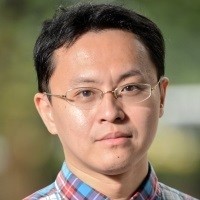 Dr. Hanghui Chen is an assistant professor of physics at NYU Shanghai and a global network assistant professor of physics at New York University. He obtained bachelor degree in Physics from Peking University and Ph.D degree in Physics from Yale University. Before he joined the faculty of NYU Shanghai, Dr. Chen held a postdoc position in the Department of Physics at Columbia University.
Dr. Hanghui Chen is an assistant professor of physics at NYU Shanghai and a global network assistant professor of physics at New York University. He obtained bachelor degree in Physics from Peking University and Ph.D degree in Physics from Yale University. Before he joined the faculty of NYU Shanghai, Dr. Chen held a postdoc position in the Department of Physics at Columbia University.
Dr. Chen's research area is at the intersection of condensed matter physics and materials science. He uses state-of-the-art first principles calculations to study electronic, magnetic, structural and topological properties of quantum materials, with a particular emphasis on complex oxides and oxide heterostructures. You can find more information about Dr. Chen and his group at www.hanghuichen.org
Regarding peer review, Dr. Chen said that "As a reviewer of npj Quantum Materials, I am thrilled to see so many rapid developments made in condensed matter physics and materials science. I am happy to contribute to peer review at npj Quantum Materials as well as at other scientific journals. I find that with constructive suggestions and comments, most papers are improved during peer review. In the meantime, reviewers may also deepen their understanding of the reviewed work when comments/issues are clarified by authors. I hope that the peer review process will be beneficial to both sides (authors and reviewers)."
Takashi Mizokawa
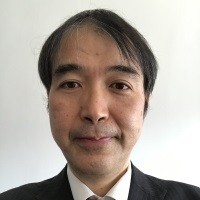 Takashi Mizokawa is a Professor in the School of Advanced Science and Engineering, Waseda University. He works on fundamental electronic structure of complex condensed matter by means of various experimental and theoretical approaches. His main research targets are the bulk and surface of correlated materials including unconventional superconductors, topological materials, multi-ferroic materials, and magnetic semiconductors. The experimental approach is based on x-ray photoemission/absorption spectroscopy to probe spin-charge-orbital states of the correlated electrons, and angle-resolved photoemission spectroscopy (ARPES) to probe their band structure and Fermi surface. In particular, by means of space-resolved and time-resolved ARPES, he has been elucidating the temporal and spatial evolutions of the correlated electrons in Mott insulators, charge-ordered insulators, and excitonic insulators. He has also developed theoretical approaches based on cluster-model configuration-interaction calculations and lattice-model unrestricted Hartree-Fock calculations which can be applied to a variety of transition-metal compounds.
Takashi Mizokawa is a Professor in the School of Advanced Science and Engineering, Waseda University. He works on fundamental electronic structure of complex condensed matter by means of various experimental and theoretical approaches. His main research targets are the bulk and surface of correlated materials including unconventional superconductors, topological materials, multi-ferroic materials, and magnetic semiconductors. The experimental approach is based on x-ray photoemission/absorption spectroscopy to probe spin-charge-orbital states of the correlated electrons, and angle-resolved photoemission spectroscopy (ARPES) to probe their band structure and Fermi surface. In particular, by means of space-resolved and time-resolved ARPES, he has been elucidating the temporal and spatial evolutions of the correlated electrons in Mott insulators, charge-ordered insulators, and excitonic insulators. He has also developed theoretical approaches based on cluster-model configuration-interaction calculations and lattice-model unrestricted Hartree-Fock calculations which can be applied to a variety of transition-metal compounds.
Regarding peer review, Mizokawa says, "npj Quantum Materials is one of the most exciting journals in my research field. I always enjoy serving it as a reviewer."
Hu Miao
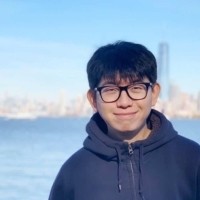 Hu Miao a staff scientist at the Oak Ridge National Laboratory. He received his PhD from the Institute of Physics, Chinese Academy of Science in 2015. He then joined the Brookhaven National Laboratory as a postdoctoral research associate until he moved to Oak Ridge in 2019. Hu Miao is a photon- and electron-spectroscopist working in the field of correlated and topological materials.
Hu Miao a staff scientist at the Oak Ridge National Laboratory. He received his PhD from the Institute of Physics, Chinese Academy of Science in 2015. He then joined the Brookhaven National Laboratory as a postdoctoral research associate until he moved to Oak Ridge in 2019. Hu Miao is a photon- and electron-spectroscopist working in the field of correlated and topological materials.
"As a peer reviewer for npj Quantum Materials, I had a unique opportunity to contribute to the advancement of quantum materials, an exciting and rapidly developing field focusing on exotic physical properties that arises from correlations and topology. Quantum materials research is critical to developing new technologies that will revolutionize areas such computing, communications, and energy. By volunteering to be a peer reviewer, I could help ensure the research published in this field is of the highest quality and that it meets the rigorous standard necessary for advancing our understanding of quantum materials. As a reviewer of npj Quantum Materials, I could engage with the latest research, stay up-to-date on cutting-edge development, and network with other experts in the field. Contributions from peer reviewers are vital to the success of the journal and the continued growth of quantum materials research."
Tadashi Machida
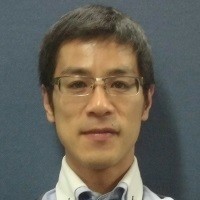 Tadashi Machida is a senior research scientist in Center for Emergent Material Science at RIKEN in Japan. His personal research is focused on development of scanning tunneling microscope working under multiple extreme conditions, exploration of the Majorana fermion in topological superconductors, and investigation of electronic properties of the superconductivity and its related phenomena in strongly correlated systems.
Tadashi Machida is a senior research scientist in Center for Emergent Material Science at RIKEN in Japan. His personal research is focused on development of scanning tunneling microscope working under multiple extreme conditions, exploration of the Majorana fermion in topological superconductors, and investigation of electronic properties of the superconductivity and its related phenomena in strongly correlated systems.
Regarding peer review, Tadashi says, “npj Quantum Materials is full of world-class work, and it is very meaningful for me to be able to contribute to its review. I would be happy to contribute to the further development of this field as a reviewer.”
Hechang Lei
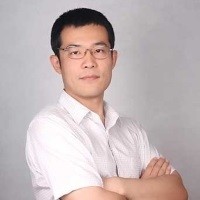 Hechang Lei is a Professor in the Physics department of Renmin University of China. He received his PhD in Condensed Matter Physics from Institute of Solid State Physics, Chinese Academy of Sciences (2009), and was afterwards a Postdoctoral fellow at Brookhaven National Laboratory in USA (2009-2012) and at the Tokyo Institute of Technology (2012-2014). One of his current research interests focus on exploring novel topological and correlated materials, including magnetic topological materials, van der Waals correlated electronic systems and unconventional superconductors. He is also interested in the exotic physical phenomena in these materials, especially correlated topological matter. You can find more information about him at the following link: http://www.phys.ruc.edu.cn/info/1169/1515.htm
Hechang Lei is a Professor in the Physics department of Renmin University of China. He received his PhD in Condensed Matter Physics from Institute of Solid State Physics, Chinese Academy of Sciences (2009), and was afterwards a Postdoctoral fellow at Brookhaven National Laboratory in USA (2009-2012) and at the Tokyo Institute of Technology (2012-2014). One of his current research interests focus on exploring novel topological and correlated materials, including magnetic topological materials, van der Waals correlated electronic systems and unconventional superconductors. He is also interested in the exotic physical phenomena in these materials, especially correlated topological matter. You can find more information about him at the following link: http://www.phys.ruc.edu.cn/info/1169/1515.htm
Regarding peer review, Dr. Lei commented, “I am very glad to become a reviewer for npj Quantum Materials who publishes lots of high quality research work on quantum materials and quantum matter. The peer review process not only improves my understanding on the related research areas but also inspires my own work. I hope to contribute more to the enhancement international influence of this journal in the future.”
Mikhail Katsnelson
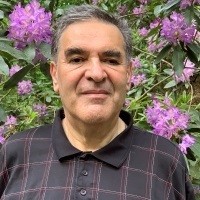 Mikhail defended his PhD in 1980 in the Institute of Metal Physics, Acad. Sci. USSR (Ekaterinburg). He was a Professor of Ural State University (1992-2001), head of the group of Quantum Theory of Metals in the Institute of Metal Physics (1998-2001), visiting researcher in Uppsala University (2001-2004). From 2004, he’s a Professor and a head of the group of Theory of Condensed Matter at Radboud University.
Mikhail defended his PhD in 1980 in the Institute of Metal Physics, Acad. Sci. USSR (Ekaterinburg). He was a Professor of Ural State University (1992-2001), head of the group of Quantum Theory of Metals in the Institute of Metal Physics (1998-2001), visiting researcher in Uppsala University (2001-2004). From 2004, he’s a Professor and a head of the group of Theory of Condensed Matter at Radboud University.
Mikhail’s main research interests covers quantum many-body theory, statistical physics, foundations of quantum physics, electronic structure of solids, strongly correlated systems, magnetism, graphene and other two-dimensional materials.
He has received awards of Lenin Komsomol Prize (State Prize for young scientists of the USSR), Spinoza Prize and Hamburg Prize for Theoretical Physics. He’s an elected member of Royal Netherlands Academy of Arts and Sciences, Royal Society of Sciences at Uppsala and Academia Europaea. He’s also a recipient of Advanced Grant and Synergy Grant of European Research Council. Knight of the Order of the Netherlands Lion.
Regarding peer review, Mikhail says, “npj Quantum Materials is an important international journal covering exciting and timely research subjects, I am happy to support this journal both as an author and as a referee.”
Homepage: https://www.theorphys.science.ru.nl/people/katsnelson/
Facebook: https://www.facebook.com/mikhail.katsnelson.1
Masato Sakano
 Masato Sakano received a doctoral degree in engineering from The University of Tokyo, Japan in 2016. After working for the Institute of Solid State Physics, The University of Tokyo (2016-2017) as a postdoctoral researcher, he has been working for the Department of Applied Physics and Quantum-Phase Electronics Center at the University of Tokyo as a research associate. His present research is on studying the electronic structures in strongly spin-orbit coupled materials, topological materials and two-dimensional materials by using photoemission spectroscopy and developing the laser angle-resolved photoemission spectroscopy system.
Masato Sakano received a doctoral degree in engineering from The University of Tokyo, Japan in 2016. After working for the Institute of Solid State Physics, The University of Tokyo (2016-2017) as a postdoctoral researcher, he has been working for the Department of Applied Physics and Quantum-Phase Electronics Center at the University of Tokyo as a research associate. His present research is on studying the electronic structures in strongly spin-orbit coupled materials, topological materials and two-dimensional materials by using photoemission spectroscopy and developing the laser angle-resolved photoemission spectroscopy system.
When asked about peer review, Dr. Sakano says, “In the peer review process, at first, I carefully review the experimental results as if I had experimented myself, consider the physics behind them, and then read the author's text of the manuscript to compare it with my ideas. I am pleased when I can improve the manuscript based on my previous experience. I will continue to review paper manuscripts with sincerity.”
Google scholar page: https://scholar.google.co.jp/citations?user=dJpj7MMAAAAJ&hl=ja
Elbio Dagotto
 Elbio Dagotto is a Distinguished Professor at the University of Tennessee, Knoxville, and Distinguished Scientist at Oak Ridge National Laboratory. As of March 2023, Dagotto has coauthored 470+ publications with over 32 K citations and has an h-index of 80 (from Web of Science). He started his scientific career receiving his PhD in Theory of High Energy Physics at the Balseiro Institute in Bariloche, Argentina. After postdoctoral positions at the University of Illinois, Urbana, and the Kavli Institute for Theoretical Physics, Santa Barbara, he transitioned to the field of Theory of Condensed Matter. In 1992 Dagotto became assistant, associate, and then full professor at Florida State University before moving to Tennessee in 2004. Dagotto's primary area of research focus has been the field of Strongly Correlated Electrons and Quantum Materials, including high critical temperature superconductors based both on copper and iron, complex oxides such as manganites with the colossal magnetoresistance, low dimensional materials with chain and ladder substructures, topological materials where correlation effects and spin-orbit coupling are both of relevance, oxide heterostructures and interfaces, and more recently Moiré lattices and associated Wigner crystals. He has developed special computational techniques for the study of spin fermion models that are applicable to Hamiltonians that combine quantum and classical degrees of freedom, and routinely uses a variety of other many-body techniques for his research.
Elbio Dagotto is a Distinguished Professor at the University of Tennessee, Knoxville, and Distinguished Scientist at Oak Ridge National Laboratory. As of March 2023, Dagotto has coauthored 470+ publications with over 32 K citations and has an h-index of 80 (from Web of Science). He started his scientific career receiving his PhD in Theory of High Energy Physics at the Balseiro Institute in Bariloche, Argentina. After postdoctoral positions at the University of Illinois, Urbana, and the Kavli Institute for Theoretical Physics, Santa Barbara, he transitioned to the field of Theory of Condensed Matter. In 1992 Dagotto became assistant, associate, and then full professor at Florida State University before moving to Tennessee in 2004. Dagotto's primary area of research focus has been the field of Strongly Correlated Electrons and Quantum Materials, including high critical temperature superconductors based both on copper and iron, complex oxides such as manganites with the colossal magnetoresistance, low dimensional materials with chain and ladder substructures, topological materials where correlation effects and spin-orbit coupling are both of relevance, oxide heterostructures and interfaces, and more recently Moiré lattices and associated Wigner crystals. He has developed special computational techniques for the study of spin fermion models that are applicable to Hamiltonians that combine quantum and classical degrees of freedom, and routinely uses a variety of other many-body techniques for his research.
Dagotto recently received the David Adler Lectureship Award in the Field of Materials Physics by the American Physical Society (2023) “For pioneering work on the theoretical framework of correlated electron systems and describing their importance through elegant written and oral communications.“ He has received several other recognitions including Fellow of the American Physical Society (1998), member of the Solid State Sciences Committee of the National Academy of Sciences (2006), Divisional Editor of Physical Review Letters (1998), Fellow of the American Association for the Advancement of Science (2010), Outstanding Referee of the APS (2008) and of the EPL (2013), the Alexander prize of the University of Tennessee (2023), etc. Dagotto also wrote a Springer Verlag book titled Nanoscale Phase Separation and Colossal Magnetoresistance and co-edited a book titled Multifunctional Oxide Heterostructures with E. Tsymbal, C.-B. Eom, and R. Ramesh. Dagotto has directed the work of over 25 PhD graduate students and close to 50 postdoctoral assistants, and he has been the recipient of many research grants. Currently he is supported by the US Department of Energy, Office of Science, Basic Energy Sciences, Materials Sciences and Engineering Division.
Regarding why chose to review for npj Quantum Materials, Dagotto says, “When I learned of the launching by Nature of the new journal npj Quantum Materials, its focus on cutting edge results involving both theory and experiments, and considering the excellent reputation of their editors, I immediately knew this was a journal with a bright future. Moreover, it allows for the publication of theoretical research, my area of expertise, with predictions that still do not have experimental verification (the latter sometimes may take years of efforts due to subtleties in material preparation). Finally, my first submissions to npjQM received professional reports indicating a careful selection of the reviewers that are involved in the process. For all these reasons, npjQM is an excellent journal for the publication of novel results in my area of quantum materials.”
Shuyun Zhou
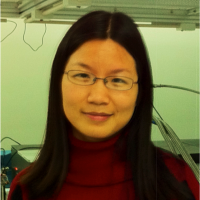 Shuyun Zhou is a professor of Physics at Tsinghua University. Her research focuses on the electronic structure of novel two-dimensional materials and heterostructures by using advanced electron spectroscopic tools, such as angle-resolved photoemission spectroscopy (ARPES) and time-resolved ARPES (TrARPES). In particular, she has been working on the development of advanced TrARPES instrumentation with mid-infrared pump pulse and tunable probe pulse, and has made important progress on the ultrafast dynamics and Floquet engineering of quantum materials. (For more information, please see http://info.phys.tsinghua.edu.cn/zhou/)
Shuyun Zhou is a professor of Physics at Tsinghua University. Her research focuses on the electronic structure of novel two-dimensional materials and heterostructures by using advanced electron spectroscopic tools, such as angle-resolved photoemission spectroscopy (ARPES) and time-resolved ARPES (TrARPES). In particular, she has been working on the development of advanced TrARPES instrumentation with mid-infrared pump pulse and tunable probe pulse, and has made important progress on the ultrafast dynamics and Floquet engineering of quantum materials. (For more information, please see http://info.phys.tsinghua.edu.cn/zhou/)
Because of her achievements, she has received Huang Kun Physics Prize, L’Oreal-UNESCO Award for Women in Science China, Sir Martin Wood Low Temperature Physics Prize etc. She currently serves as associate editor for Science Bulletin and Chinese Physical Letters, and also as reviewer for multiple journals including npj Quantum materials. She is also a program committee member of the Chinese Physical Society (CPS) and International Union of Pure and Applied Physics (IUPAP).
